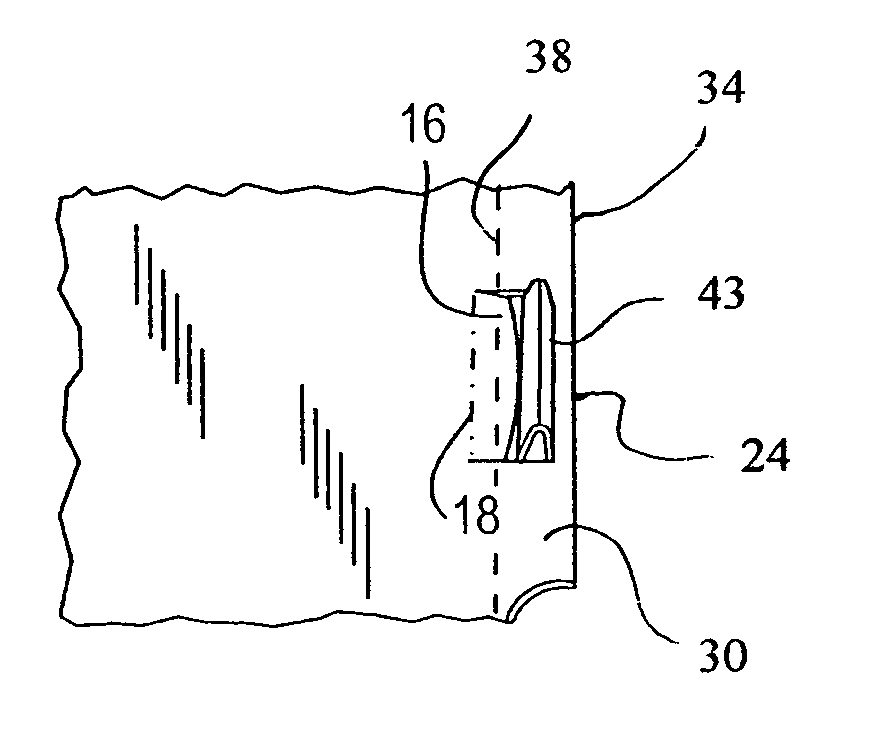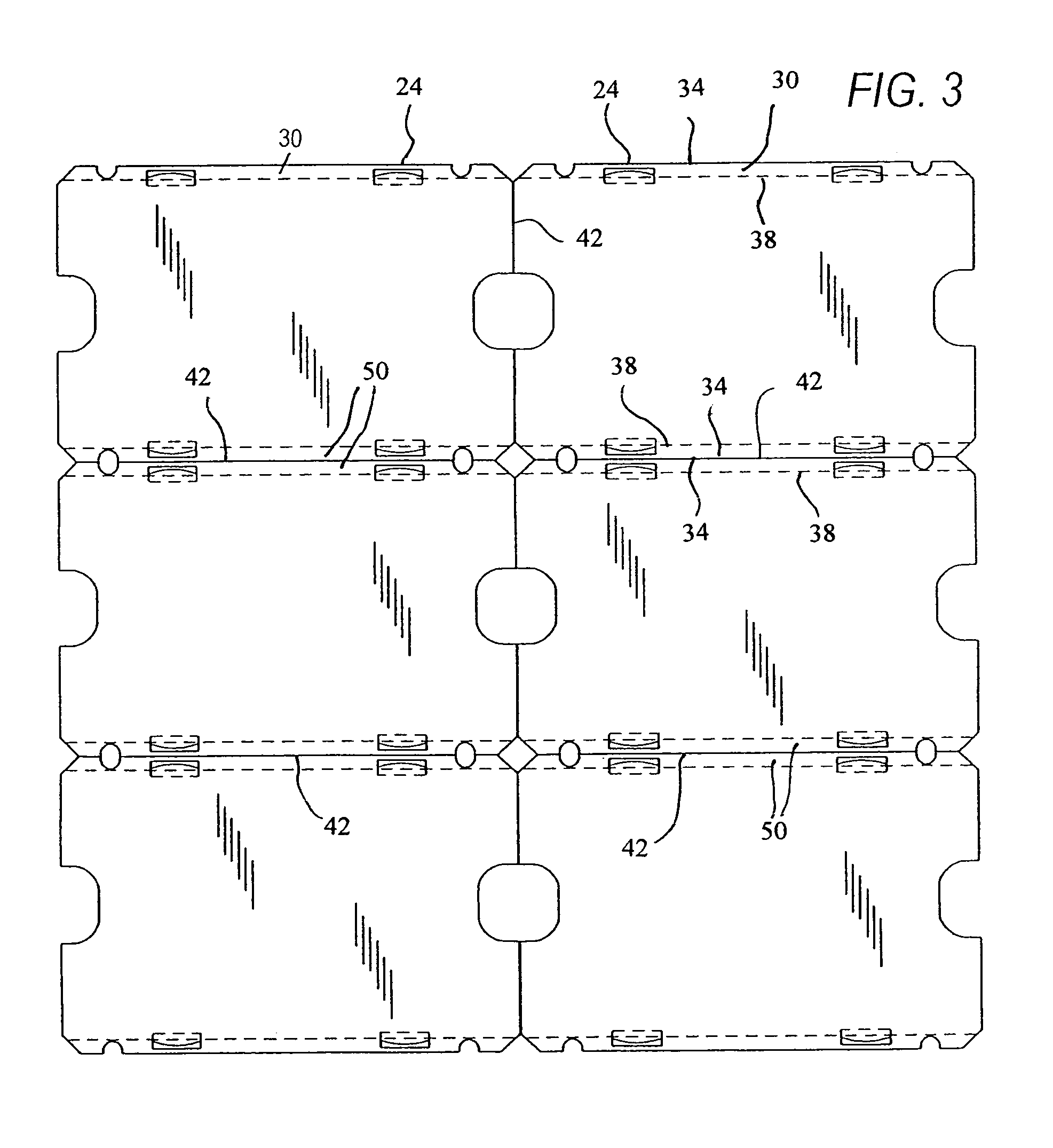Tongue lock for stackable containers
a technology of friction locks and stackable containers, applied in packaging foodstuffs, packaging goods types, transportation and packaging, etc., can solve the problems of short life span of friction locks, loose stacks that are prone to toppling, loose fitting dust covers that are prone to easy and premature removal, etc., to increase the effectiveness and reusability of friction locks, prevent fraying and weakening of paperboard, and increase tear resistance
- Summary
- Abstract
- Description
- Claims
- Application Information
AI Technical Summary
Benefits of technology
Problems solved by technology
Method used
Image
Examples
Embodiment Construction
[0023]A dust cover scored in accordance with one embodiment of the invention is shown in FIG. 1. Cover 10 is shaped and scored for the purpose of fitting onto the top of an open-topped container suitable for holding, shipping or stacking a wide variety of objects, such as perishable agricultural products. The cover is preferably made of corrugated paperboard or any type of flexible container material known in the art that is firm enough to create frictional contact and secure connections between a top panel and stacking tab, yet flexible enough to bend along score lines, and is suitable for the shipping and transporting of a wide variety of food items. The cover is substantially rectangular in shape, with a length and width largely identical to the length and width of a corresponding open-topped container. However, the exact length and width of the dust cover can vary greatly as long as the container is properly covered.
[0024]The cover of FIG. 1 is designed for use with open-topped ...
PUM
| Property | Measurement | Unit |
|---|---|---|
| Flexibility | aaaaa | aaaaa |
| Width | aaaaa | aaaaa |
Abstract
Description
Claims
Application Information
 Login to View More
Login to View More - R&D
- Intellectual Property
- Life Sciences
- Materials
- Tech Scout
- Unparalleled Data Quality
- Higher Quality Content
- 60% Fewer Hallucinations
Browse by: Latest US Patents, China's latest patents, Technical Efficacy Thesaurus, Application Domain, Technology Topic, Popular Technical Reports.
© 2025 PatSnap. All rights reserved.Legal|Privacy policy|Modern Slavery Act Transparency Statement|Sitemap|About US| Contact US: help@patsnap.com



